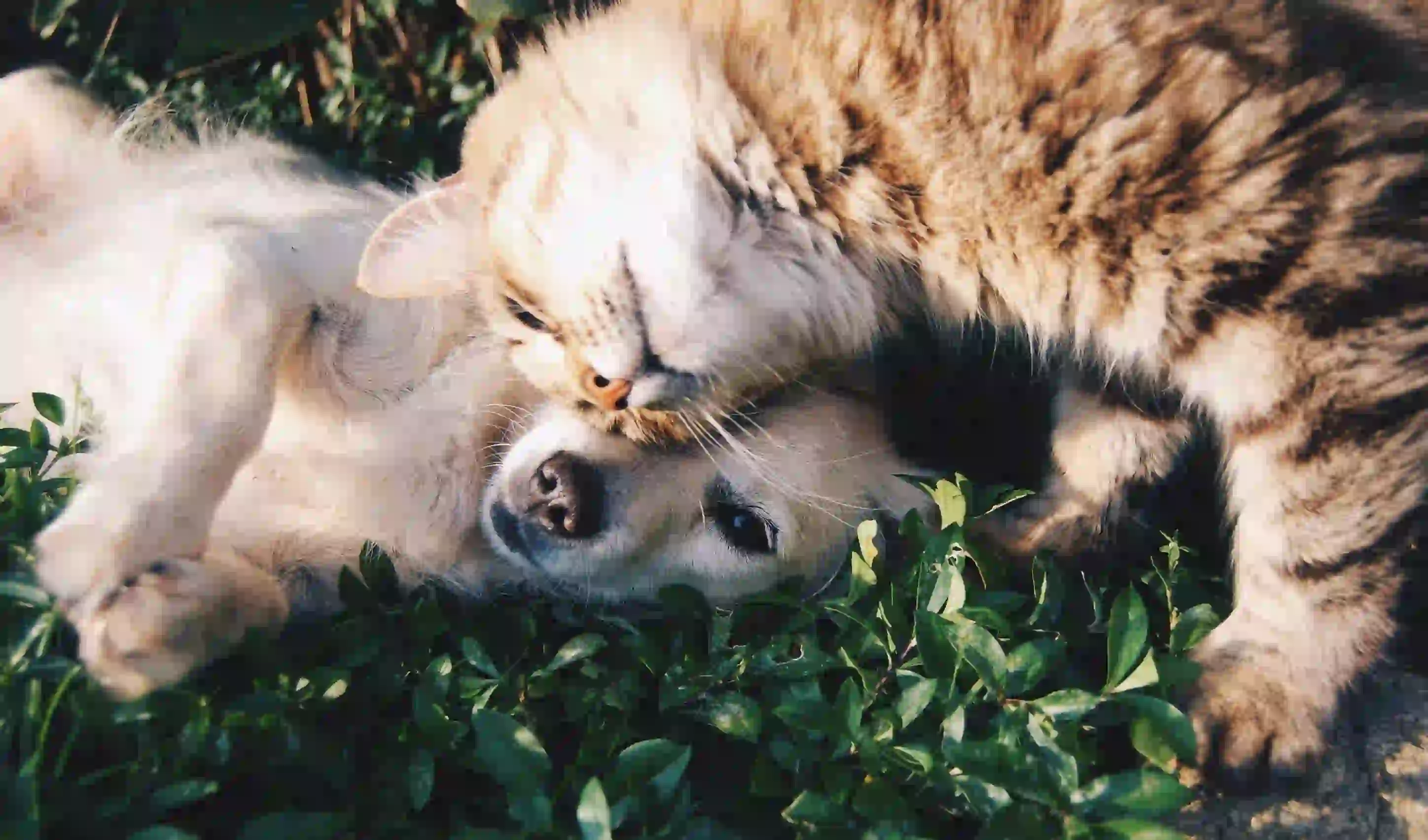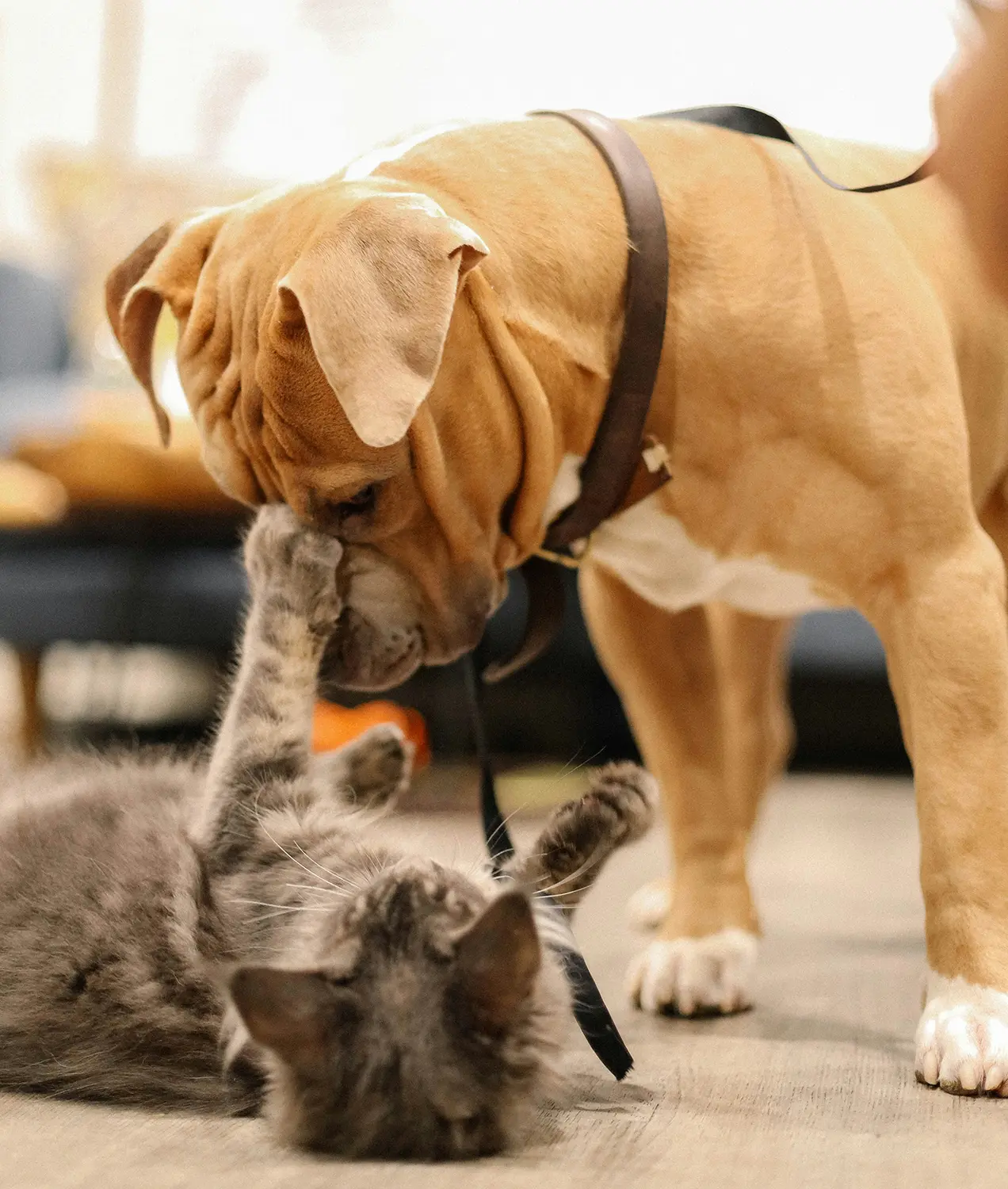
Introducir una nueva mascota en casa puede ser una experiencia emocionante pero difícil, sobre todo cuando se trata de perros y gatos. Que coexistan pacíficamente depende de sus personalidades individuales, de su socialización previa y de su dedicación a un proceso de introducción gradual y sin estrés. Integrar a perros y gatos puede llevar días, semanas o incluso meses. Aunque algunas mascotas nunca serán compatibles, la mayoría pueden aprender a convivir en armonía. He aquí cinco consejos que le ayudarán a introducir con seguridad a perros y gatos.
#1: Evalúe la personalidad de cada mascota
Antes de introducir una nueva mascota, evalúe la personalidad de su mascota actual. Observe sus reacciones ante otros animales. Si su mascota es amistosa y curiosa, es más probable que el proceso de introducción tenga éxito. Sin embargo, si muestra miedo o agresividad, considere la conveniencia de seguir adelante. Los gatos suelen adaptarse a los perros, pero no todos los perros son amigos de los gatos. Los perros con un fuerte instinto de presa pueden ver a los gatos como objetivos. Si busca un perro que se lleve bien con su gato, según el AKC, estas nueve razas de perros son una buena elección:
- Basset Hound
- Beagle
- Bulldog
- Cavalier King Charles Spaniel
- Collie
- Golden Retriever
- Labrador Retriever
- Papillon
- Pug
#2: Crear espacios separados
Al principio, cada mascota debe tener un espacio separado y seguro en su casa. Lo ideal sería que estas zonas estuvieran divididas por una puerta para mascotas y una puerta sólida, que proporcionen un entorno seguro para ambas mascotas. Con el tiempo, el objetivo es que compartan toda la casa y que los gatos tengan una zona libre de perros por seguridad. Este espacio también impide que los perros accedan a la comida y a la caja de arena del gato. Elija estas zonas con cuidado para que cada mascota se sienta segura.
#3: Introduzca el olor, el sonido y la vista gradualmente
Empiece por permitir que cada mascota se familiarice con el olor de la otra. Intercambie mantas o toallas entre sus espacios para que aprendan el olor del otro. Al cabo de unos días, deje que se oigan mutuamente organizando sesiones de juego o adiestramiento a ambos lados de la puerta. Cuando se sientan cómodos con estos pasos, deje que se vean a través de una puerta para mascotas. Continúe con estas sesiones hasta que ambas mascotas estén tranquilas y centradas en usted.
#4: Refuerce el comportamiento tranquilo
Recompense a su perro por su comportamiento tranquilo con el gato durante estas sesiones. Practique órdenes como
- Quédate
- Siéntate
- Ven
- Tacón
- Abajo
con el gato cerca. De este modo, su perro aprenderá a concentrarse a pesar de la presencia del gato. Los perros curiosos y excitables pueden tardar más en calmarse, pero la persistencia es la clave. Con el tiempo, la novedad del gato desaparecerá y ambas mascotas podrán estar más relajadas la una con la otra.
# 5: Las sesiones deben ser breves y positivas
Las sesiones de introducción deben ser breves, de menos de 10 minutos. Aumente gradualmente la duración a medida que ambas mascotas se sientan más cómodas. Si el progreso se estanca, dé un paso atrás y refuerce el comportamiento tranquilo antes de volver a avanzar. Una vez que ambas mascotas estén relajadas al verse a través de la puerta, puede intentar los encuentros cara a cara. Lleve al perro con correa y asegúrese de que el gato tiene una vía de escape. Las interacciones iniciales deben ser breves. Prolónguelas gradualmente, terminando siempre con una nota positiva.
Si no progresa, busque un adiestrador cualificado que le ayude. Con tiempo, paciencia y el enfoque adecuado, la mayoría de los perros y gatos pueden coexistir pacíficamente. Puede que algunos sólo se toleren, mientras que otros pueden formar fuertes vínculos. En cualquier caso, una planificación cuidadosa y un proceso de introducción gradual pueden marcar una diferencia significativa a la hora de crear un hogar armonioso para todas sus mascotas.
Referencias:










Escribir un comentario
¿Cuál es su calificación general?